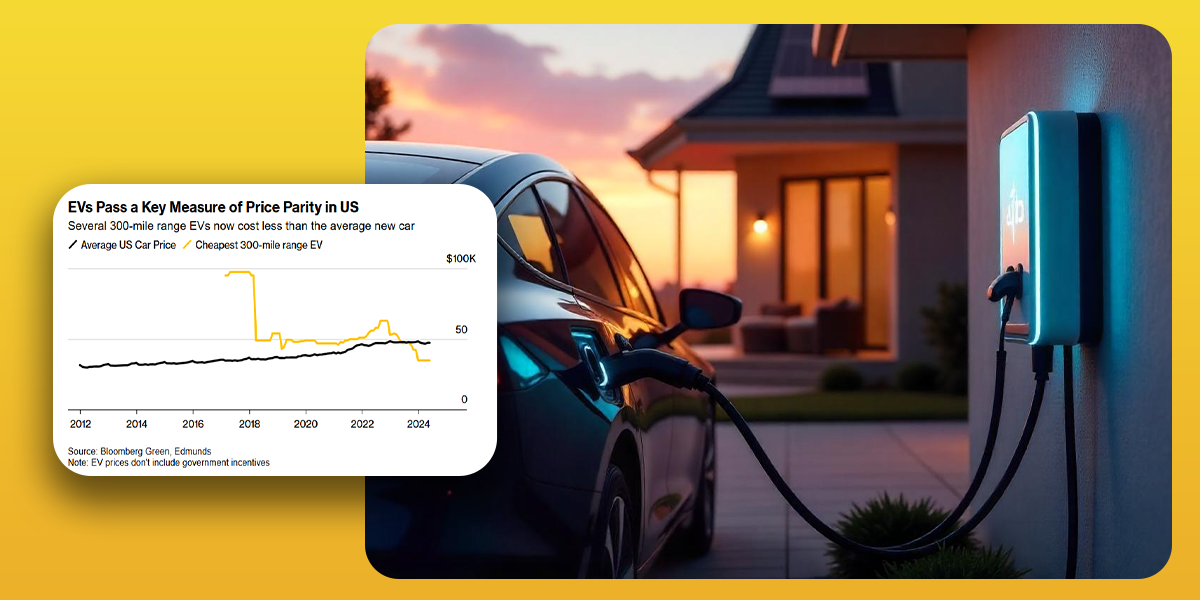
Long-range electric vehicle (EV) that offer at least 300 miles (480 km) of range in a single charge are now priced below the average cost of a new vehicle in the US. These long-range vehicles were expensive before, but tough competition and innovative technology have changed that. More people can now switch to EVs at an affordable price. Furthermore, giant automakers like Tesla, Hyundai-Kia, and General Motors led the automotive industry. They now provide these EVs at an economical price with high performance
Brands like Tesla, Hyundai, and GM make EVs more budget-friendly
According to the report from“ Bloomberg Green,” the most affordable is Hyundai’s 2024 Ioniq 6 with an impressive 361 miles of range, and the price is 25% below $47,000 an average new car’s cost. Tesla and General Motors also understood the assignment . They offer budget-friendly EVs with over 300 miles of range, with features, fast charging and enough range to handle most road trips.
One standout is the new Chevy Equinox EV. This SUV costs around $42,000 with a 319-mile range before the federal tax credit, which can reduce the cost by $7,500. With those incentives, a base model that will be available later this year will cost less than $28,000. That makes it one of the most affordable long-range EVs yet and a budget-friendly best electric vehicle.
Why are electric vehicle (EV) prices going down?
The US auto industry has experienced strong competition over the last six months. There is also growing pressure to lower the electric vehicle cost. Automakers have begun to realize that consumers are more informed about the pros and cons of electric cars, battery range, charging speeds, and charger accessibility. They are rejecting EVs that are not worth up to the sticker price. Some buyers even compare EVs to hybrid electric vehicles, but long-range EVs are closing the gap quickly.
Many factors contribute to the decline in electric vehicle prices. These include strong competition, lower battery costs, an improved lithium supply chain, federal and state EV incentives, and smarter large-scale electric vehicle (EV) production.
Even better, leasing is becoming an easier and more cost-effective option. As car dealers qualify for EV tax credits, leasing an EV can be up to 37% cheaper than leasing a similar gas-powered Toyota or BMW.
Overall, this trend shows strong progress in EV development and production.
The Long-Range electric vehicle trend is booming
This drop in prices is a big milestone for clean energy and the future of transportation. As long-range EVs become more accessible, more people can switch to EVs without compromising comfort, range, or reliability. Furthermore, companies that offer high performance at an affordable price will only survive in this EV race.
In 2025, the average electric vehicle (EV) range in the US is about 300 per miles. This marks a significant improvement over the past decade. The median EV range has more than tripled from 84 miles in 2014 to 283 miles in 2024. Electric vehicles (EVs) account for approximately 7.5% of new car sales in the US, according to data from CarEdge. This represents a year-over-year increase but a slight decline from the 8.7% share observed in the previous quarter. One of the top concerns for buyers is, how much does it cost to charge an EV? . For many, the cost of home charging is significantly lower than gasoline, especially with off-peak rates. To make things easier, many homeowners are investing in electric vehicle charger installation. Meanwhile, the public charging network is also expanding.
According to the International Energy Agency (IEA), the U.S. had nearly 200,000 public charging points at the end of 2024. This number is projected to reach over 500,000 by the end of 2030. This opens the door for widespread EV charging installation and programs that help people to install electric car chargers at home.
To conclude, now is the best time to switch to EVs. Prices are dropping, and tax credits are available. To keep this momentum, policymakers should continue to invest in EV infrastructure and simplify EV tax benefits. Automakers should boost local production, improve charging speed, and focus on the production of affordable models.
News Source: Bloomberg Green Research
